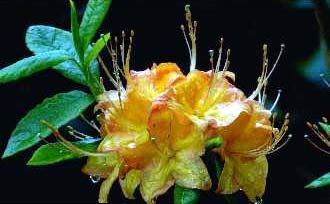Many of our most popular garden plants have one serious drawback: they are either completely poisonous, or they bear poisonous berries. Poisonous plants are the cause of innumerable severe illnesses, even deaths, among adults and children, and are particularly vulnerable.
Whether we are in the flower garden or vegetable garden, or even in our homes, we are seldom out of easy reach of some poisonous plants. Poisonous plants are much more common than one would suspect; more than 500 known poisonous species are growing in the United States alone. But luckily, only a few are lethal. The greatest number are less harmful, provided they are not eaten in large quantities. But even some of the least poisonous plants can be extremely painful and irritating to the skin if touched.
Beautiful but Poisonous
Found among our most prized trees, shrubs, vegetables, and vines, poisonous plants give us shade, colorful flowers, and food. Some of our most prized cultivated ornamentals are extremely dangerous, and many of our spring wild flowers, and even our most common weeds, contain toxic substances.
Poisonous Plants May Be Useful
Some of our most poisonous plants play more important roles in our lives - they are used to make valuable medicines. The lovely purple foxglove, for example, which is widely cultivated in gardens and grows wild in shady woods, contains the life-saving drug digitalis. Digitalis strengthens the heartbeat of a seriously ill person, but incorrect dosages can be fatal.
Protect Your Children
Unfortunately, children are much more susceptible to the effects of a poison than adults. Therefore it is extremely important that you identify each plant before placing it in your home or garden. Know which of your garden and house plants are poisonous, and point out their locations to your children. Teach children to recognize the most common poisonous plants, such as poison ivy and poison oak, which cause painful skin irritations. Teach your children at an early age never to put unknown plants or parts of plants in their mouths.
What To Do
The best treatment for plant poisoning is not to let it happen, however, accidents will happen even though we try to be careful. Be prepared for an emergency by keeping an ounce or more of ipecac syrup handy. It reduces the effects of poisoning by inducing vomiting. If you don't have ipecac on hand, vomiting can be induced by drinking plenty of lukewarm water then tickling the back of the throat when the stomach is full. Phone your doctor immediately, and remember that the symptoms of poisoning may take as long as 6 to 15 hours to appear. If you are unable to reach your doctor, call your nearest possible poison center or emergency room.
TIPS: BE ALERT
Since toddlers are apt to sample anything, they must be watched until they reach a teachable age. Take a look around your garden to identify which plants your toddler may use as playthings (seeds, fruits, stems, etc.). Label bulbs and seeds and store them safely out of toddler's reach.


